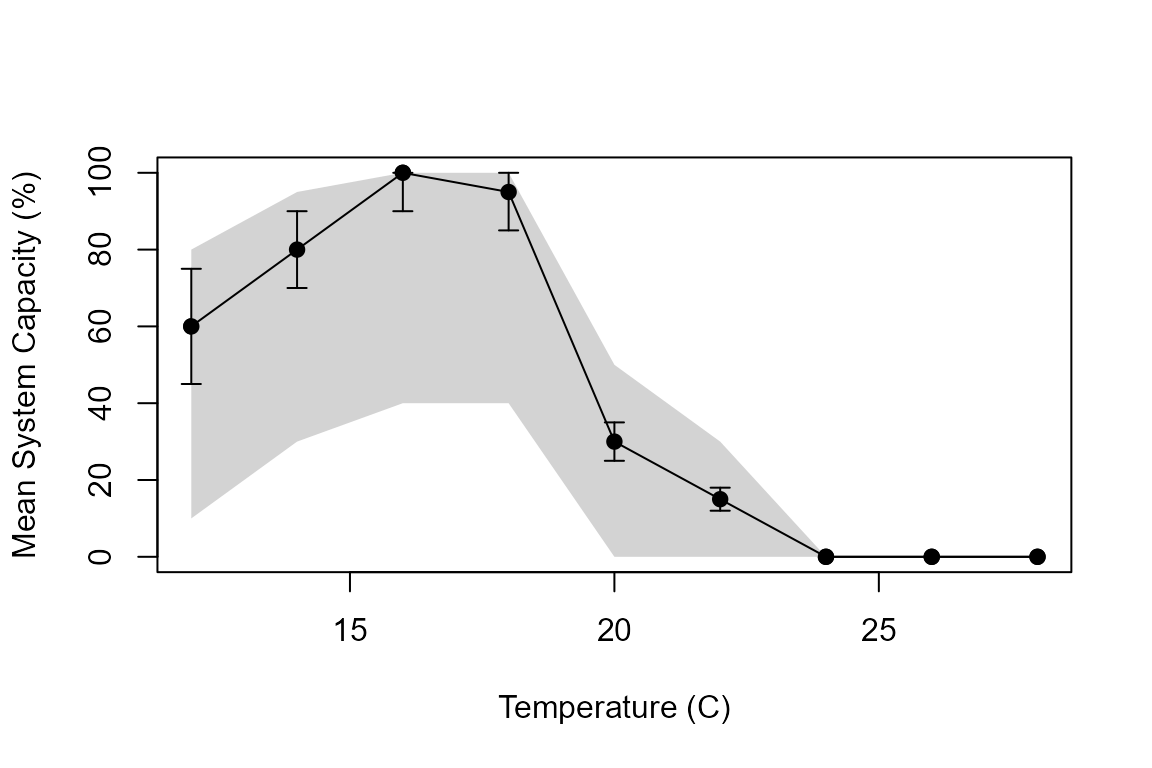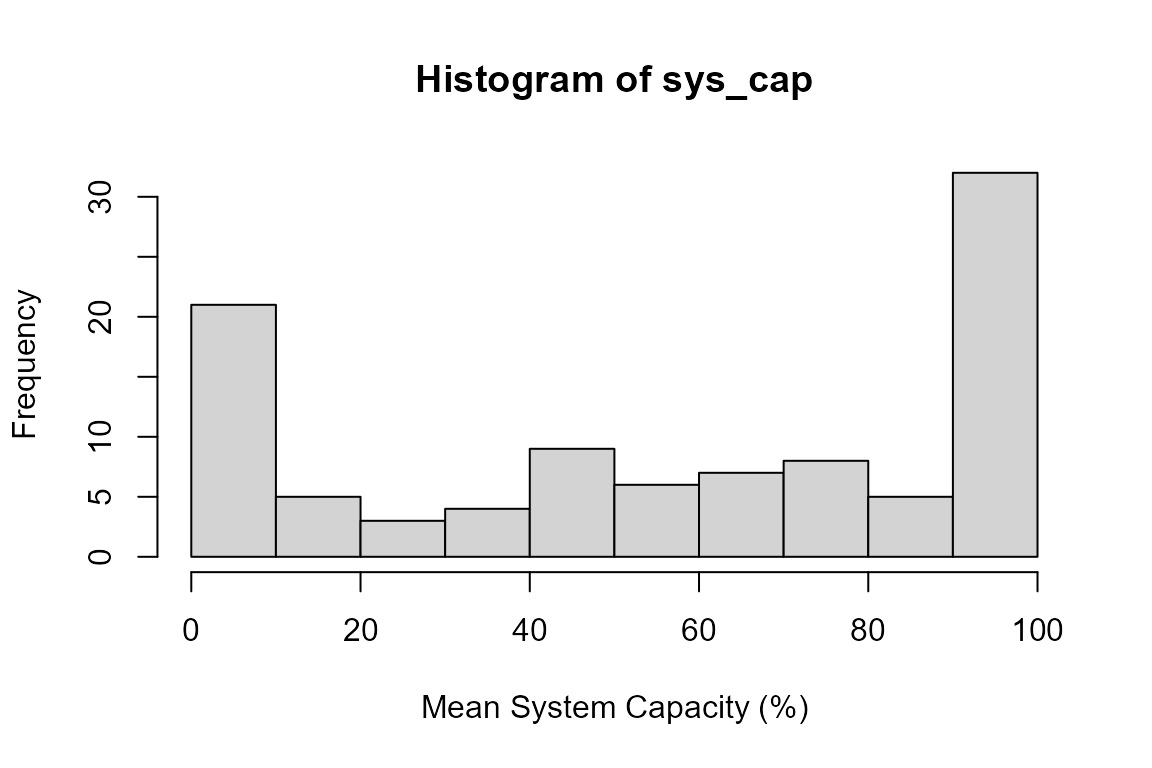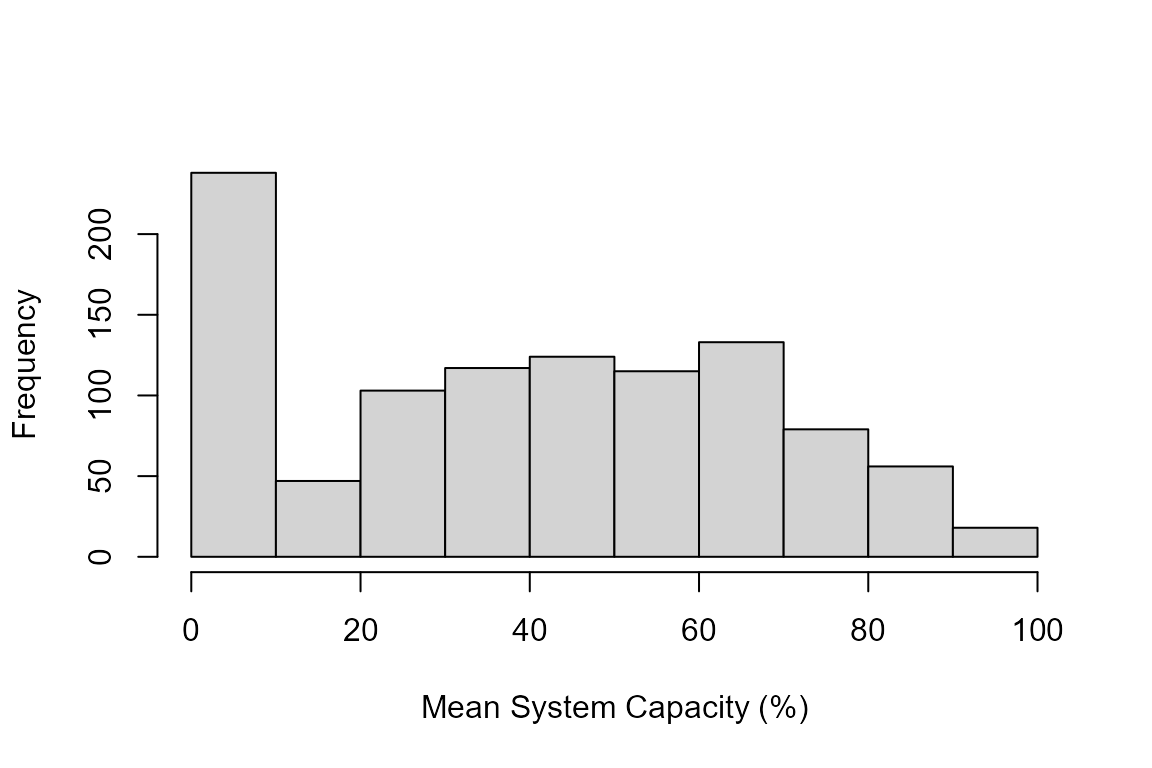1. Joe Model Overview
2024-03-15
a01-joe-model.RmdOverview
The following tutorial provides an overview of running the Joe Model
from the CEMPRA R package. Users following this tutorial should have R,
RStudio and the R package devtools installed on their
machine.
Installation
At this time the CEMPRA R package is hosted on GitHub and can be installed using devtools. In the near future the CEMPRA package will be available on R-CRAN for standard installation and loading.
Import Data
The Joe Model requires two key datasets, a stressor-response workbook
and a stressor magnitude workbook. We will import these datasets using
the StressorResponseWorkbook and
StressorMagnitudeWorkbook functions. Change
filename_sr and filename_rm to the location of
your stressor-response and stressor-magnitude workbooks on your own
computer. We are loading canned data from the CEMPRA package for this
tutorial.
Stressor Response Workbook
The stressor-response Excel workbook must follow a standardized
format. The first worksheet should be titled Main.
Main Worksheet
#> Stressors Stressor_cat Interaction Linked Stress_Scale Function
#> 1 Aug_flow Aug_flow Minimum A linear continuous
#> 2 Barrier_dams Barrier_dams NA NA linear step
#> 3 BKTR BKTR NA NA linear continuous
#> 4 Feb_flow Feb_flow Minimum A linear continuous
#> 5 Foot_flow Foot_flow NA NA linear continuous
#> Life_stages Parameters Units Model
#> 1 adult <NA> NA Joe Model
#> 2 adult <NA> NA Joe Model
#> 3 adult <NA> NA Joe Model
#> 4 adult <NA> NA Joe Model
#> 5 adult <NA> NA Joe ModelTake a look at the Main worksheet.
- Stressors Name of the stressor…
- Stressor_cat Name of the stressor category (only relevant to population model)…
- Interaction Can be either blank or NA with the default of multiplicative, ‘Additive’ or ‘Minimum’…
- Linked For variables with minimum interaction…
-
Stress_Scale Can be either
'linear'or'logarithmic'… -
Function Can be either
'continuious'or'step'… -
Life_stages Can be either
'fry_parr','alevin','sub_adult'or'adult',… -
Parameters Can be blank or NA (default), which
implys the relationship is for system capacity or linked to a vital rate
'survival','capacity'…
Stressor-Response Worksheets
After the stressor response Excel workbook then must have individual
worksheets for each of the stressors after the Main sheet.
Please ensure that the spelling is identical between the
Stressors column in the Main sheet and the
work sheet name for each stressor.
Each stressor-response curve is provided on a separate worksheet. The example below shows the stressor-response curve of water temperature (C) and the Adult system capacity.
| Temperature | Mean System Capacity (%) | SD | low.limit | up.limit |
|---|---|---|---|---|
| 12 | 60 | 15 | 10 | 80 |
| 14 | 80 | 10 | 30 | 95 |
| 16 | 100 | 10 | 40 | 100 |
| 18 | 95 | 10 | 40 | 100 |
| 20 | 30 | 5 | 0 | 50 |
| 22 | 15 | 3 | 0 | 30 |
| 24 | 0 | 0 | 0 | 0 |
| 26 | 0 | 0 | 0 | 0 |
| 28 | 0 | 0 | 0 | 0 |
- Temperature The first column should be the name of the stressor…
- Mean System Capacity (%) The next column is the mean system capacity (from 0 - 100)..
- SD The third column is the standard deviation for the mean system capacity. This is useful to represent uncertainty in the relationship. For example, a temperature of 12C will not always equate to a system capacity of exactly 90%…
- low.limit Lower limits for the cumulative system capacity…
- up.limit Upper limits for the cumulative system capacity…

Example Stressor-Response Curve
The figure above shows a stressor response curve. The raw values of the stressor are plotted on the x-axis and the mean system capacity is shown on the y-axis. For each stressor and each simulation values for the mean system capacity will be drawn from a normal distribution with a mean and standard deviation (error bars) bound by the lower and upper limits (grey shading).
# Load default file from Joe Model Package
filename_sr <- system.file("extdata", "stressor_response_fixed_ARTR.xlsx", package = "CEMPRA")
# Use the StressorResponseWorkbook() function from the CEMPRA package to format the data and check for errors and issues
sr_wb_dat <- StressorResponseWorkbook(filename = filename_sr)
names(sr_wb_dat)
#> [1] "main_sheet" "stressor_names" "pretty_names" "sr_dat"Stressor Magnitude Workbook
Review the stressor magnitude levels for a given location.
| HUC_ID | NAME | Stressor | Stressor_cat | Mean | SD | Distribution | Low_Limit | Up_Limit | Comments |
|---|---|---|---|---|---|---|---|---|---|
| 1702010107 | Name… | Aug_flow | Aug_flow | 100 | 0 | normal | 100 | 0 | NA |
| 1702010107 | Name… | Barrier_dams | Barrier_dams | 0 | 0 | normal | 0 | 5 | NA |
| 1702010107 | Name… | BKTR | BKTR | 0 | 0 | normal | 0 | 100 | NA |
| 1702010107 | Name… | Feb_flow | Feb_flow | 100 | 0 | normal | 100 | 0 | NA |
Column names should be as follows:
- HUC_ID Unique (numeric) identifier for a location of interest. Formally from Hydrologial Unit Code (HUC) representing unique sub basins, but can be anything…
- NAME Name (character) of a given location. Note that this column is used for display purposes only…
- Stressor Name of the stressor. Note that this must match the spelling used in the stressor response workbook…
- Stressor_cat Name of the stressor category. Note that this mutch match the spelling used in the stressor response workbook…
- Mean Mean value for the specific location…
- SD Standard deviation for the specific stressor for that location. The value of each stressor and combination will be resampled for each simulation…
-
Distribution Re-sampling distribution either
'lognormal'or'normal'… - Low_Limit Lower limits for the location-specific stressor…
- Up_Limit Upper limits for the location-specific stressor….
# Load default file from Joe Model Package
filename_rm <- system.file("extdata", "stressor_magnitude_unc_ARTR.xlsx", package = "CEMPRA")
# Use the StressorMagnitudeWorkbook() function from the CEMPRA package to format the data and check for errors and issues
smw <- StressorMagnitudeWorkbook(filename = filename_rm, scenario_worksheet = "natural_unc")
names(smw)
#> [1] "HUC_ID" "NAME" "Stressor" "Stressor_cat" "Mean"
#> [6] "SD" "Distribution" "Low_Limit" "Up_Limit" "Comments"Cumulative System Capacity
Run the cumulative system capacity for a single watershed
# Stressor Response Workbook object = sr_wb_dat
# Run the mean_Response() function to create response curves.
# Note that this intermediate object is need throughout
mean.resp.list <- mean_Response(
n.stressors = nrow(sr_wb_dat$main_sheet),
str.list = sr_wb_dat$sr_dat,
main = sr_wb_dat$main_sheet
)
# Set up objects for system capacity function - for "Temperature_adult"
f.main.df <- sr_wb_dat$main_sheet[which(sr_wb_dat$main_sheet$Stressors == "Temperature_adult"), ]
f.stressor.df <- sr_wb_dat$sr_dat[["Temperature_adult"]]
f.mean.resp.list <- mean.resp.list[[which(sr_wb_dat$main_sheet$Stressors == "Temperature_adult")]]
# Stressor Magnitude: Make up fake data for a sample watershed (e.g., HUC_ID: 1701010208)
smw_sample <- data.frame(HUC_ID = 0, NAME = "Location Name",
Stressor = "Temperature_adult", Stressor_cat = "Temperature",
Mean = 14, SD = 3, Distribution = "normal",
Low_Limit = 4, Up_Limit = 20)
# ?SystemCapacity # Preview help function
test_sc <- SystemCapacity(f.dose.df = smw_sample,
f.main.df = f.main.df,
f.stressor.df = f.stressor.df,
f.mean.resp.list = f.mean.resp.list,
n.sims = 100)
names(test_sc)
#> [1] "sys.cap" "dose" "dose.mat"
# Look at system capacity for one variable and one stressor
sys_cap <- round(test_sc$sys.cap * 100, 3)
hist(sys_cap, xlab = "Mean System Capacity (%)")
Mean System Capacity for temperature for a hypothetical watershed
Joe Model
What about all variables and all stressors - run the full Joe Model…
# Import of stressor response and magnitude workbook
filename_rm <- system.file("extdata", "stressor_magnitude_unc_ARTR.xlsx", package = "CEMPRA")
filename_sr <- system.file("extdata", "stressor_response_fixed_ARTR.xlsx", package = "CEMPRA")
dose <- StressorMagnitudeWorkbook(filename = filename_rm, scenario_worksheet = "natural_unc")
sr_wb_dat <- StressorResponseWorkbook(filename = filename_sr)
# ----------------------------------------------------------
# Run the Basic Joe Model
jmr <- JoeModel_Run(dose = dose, # Stressor Magnitude Object
sr_wb_dat = sr_wb_dat, # Stressor Response Object
MC_sims = 10 # Number of Monte Carlo simulations
)
names(jmr)
#> [1] "ce.df" "sc.dose.df"
# ce.df = Mean system capacity for each HUC_ID for each simulation
# sc.dose.df = Mean system capacity for each variable for each HUC_ID for each simulation
msc <- jmr$ce.df$CE * 100
hist(msc, xlab = "Mean System Capacity (%)", main = NULL)
Mean System Capacity for all stressors and all watersheds across all simulations